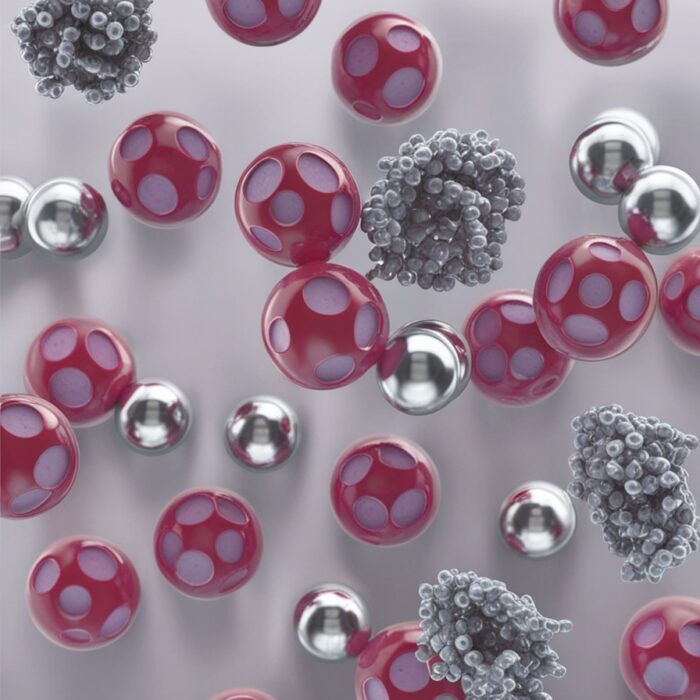In the field of hematopoietic stem cell research and blood banking, the purity and quality of CD34+ hematopoietic stem and progenitor cells (HSPCs) are paramount. These cells form the cornerstone of regenerative medicine, bone marrow transplantation, and gene therapy research. Because of their vital role in both preclinical studies and translational applications, the methods used to isolate these cells carry significant weight in determining research outcomes.
One of the most widely used models for evaluating the potency of human CD34+ cells is the NSG (NOD scid gamma) mouse model. This highly immunodeficient strain is considered the gold standard for assessing human stem cell engraftment in vivo. Researchers rely on NSG engraftment data to judge the viability and long-term potential of isolated cells. Yet, the quality of data from NSG models depends heavily on whether the isolated CD34+ cells are bead-labeled or bead-free.
Note: Miltenyi MACS workflows intentionally produce bead-labeled CD34+ cells by design; FerroBio’s workflow yields a bead-free output. This distinction is critical.
Bead-Bound vs. Bead-Free: Why It Matters
When CD34+ cells are transplanted into NSG mice, bead-bound cells can confound early readouts. Unlike fully bead-free outputs, bead-bound cells often face steric hindrance that delays early repopulation. Additionally, flow cytometry analyses can be compromised by attached beads, which alter scatter properties and generate gating artifacts. The result is not necessarily failed engraftment, but rather confounded data that obscures the true functional potency of the cells.
Bead-bound CD34+ cells may therefore present challenges in three major areas: 1. Delayed Engraftment Kinetics: Residual beads physically interfere with cell-to-niche interactions, slowing initial repopulation. 2. Distorted Flow Cytometry Readouts: Beads complicate scatter profiles, masking or inflating CD34+ signals. 3. Misrepresentation of Potency: Early engraftment is predictive of long-term outcomes; bead interference reduces the accuracy of these readouts.
Bead-free CD34+ cells eliminate these complications, allowing researchers to measure functional potency without confounding variables.
Column-Based vs. Column-Free Workflows
Traditional column-based isolation methods, including widely adopted MACS systems, typically yield bead-labeled outputs. These systems are effective in enriching CD34+ populations, but by design, they leave antibody-coated magnetic beads attached to the target cells unless a specific release protocol is used. For many downstream applications, this bead attachment introduces analytical and functional complexity.
By contrast, FerroBio’s column-free magnetic separation workflow is engineered to deliver bead-free cells. Without reliance on columns or Ficoll density gradients, the process is faster, more reproducible, and designed for scalability. Most importantly, the output is bead-free, ensuring that CD34+ cells are ready for functional use in NSG mouse models or clinical translation.
The Scientific and Practical Implications
For researchers validating stem cell therapies, bead-free outputs ensure that early engraftment kinetics reflect true biological potential rather than artifacts from bead carryover. For blood banks, where reproducibility and efficiency are critical, bead-free systems reduce operator variability and minimize time lost to troubleshooting or reprocessing.
The distinction between bead-labeled and bead-free is not just semantic. It determines whether your engraftment data can be trusted as a measure of potency. Bead-free outputs translate to: – Cleaner flow cytometry profiles. – Faster repopulation kinetics in vivo. – Reduced variability across operators and labs. – Improved standardization of results.
FerroBio: The Bead-Free Solution
FerroBio’s system is tailored to meet these challenges head-on. By eliminating beads at the source, FerroBio delivers CD34+ cells optimized for both in vitro and in vivo use. Benefits include: – Bead-Free Purity: No residual microbeads to distort engraftment outcomes. – Faster Processing: Up to 40% faster than Ficoll + column workflows (based on internal SOP-matched runs). – Scalable and Reproducible: Adaptable to both small-scale academic labs and full-scale blood bank operations. – Stronger Early Engraftment: Demonstrated in NSG models, where bead-free cells show earlier and more robust reconstitution.
For any researcher, biobank, or clinical center aiming to generate high-quality engraftment data, FerroBio provides a future-proof solution that eliminates the risks of bead interference.

Leave a Reply